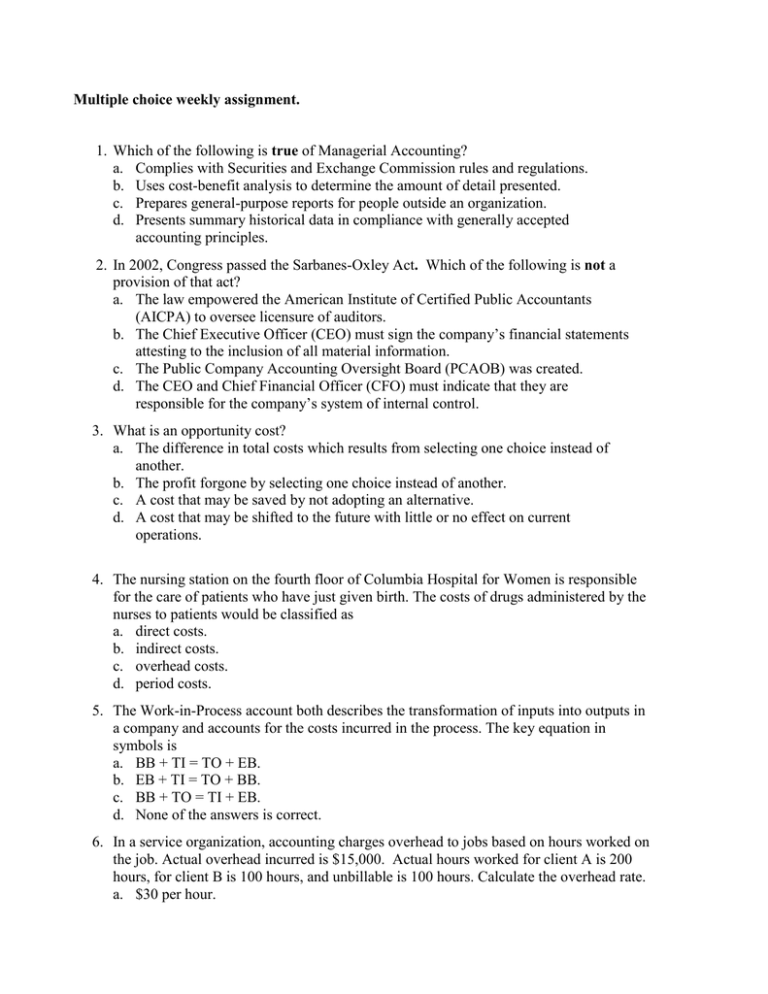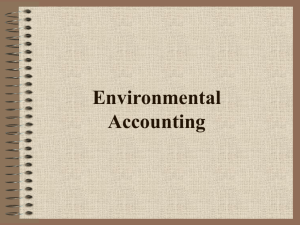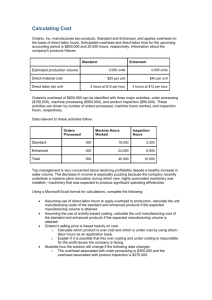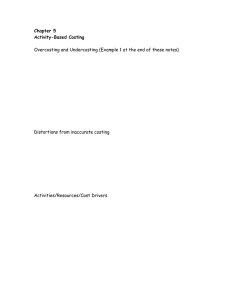Multiple choice weekly assignment
advertisement

Multiple choice weekly assignment. 1. Which of the following is true of Managerial Accounting? a. Complies with Securities and Exchange Commission rules and regulations. b. Uses cost-benefit analysis to determine the amount of detail presented. c. Prepares general-purpose reports for people outside an organization. d. Presents summary historical data in compliance with generally accepted accounting principles. 2. In 2002, Congress passed the Sarbanes-Oxley Act. Which of the following is not a provision of that act? a. The law empowered the American Institute of Certified Public Accountants (AICPA) to oversee licensure of auditors. b. The Chief Executive Officer (CEO) must sign the company’s financial statements attesting to the inclusion of all material information. c. The Public Company Accounting Oversight Board (PCAOB) was created. d. The CEO and Chief Financial Officer (CFO) must indicate that they are responsible for the company’s system of internal control. 3. What is an opportunity cost? a. The difference in total costs which results from selecting one choice instead of another. b. The profit forgone by selecting one choice instead of another. c. A cost that may be saved by not adopting an alternative. d. A cost that may be shifted to the future with little or no effect on current operations. 4. The nursing station on the fourth floor of Columbia Hospital for Women is responsible for the care of patients who have just given birth. The costs of drugs administered by the nurses to patients would be classified as a. direct costs. b. indirect costs. c. overhead costs. d. period costs. 5. The Work-in-Process account both describes the transformation of inputs into outputs in a company and accounts for the costs incurred in the process. The key equation in symbols is a. BB + TI = TO + EB. b. EB + TI = TO + BB. c. BB + TO = TI + EB. d. None of the answers is correct. 6. In a service organization, accounting charges overhead to jobs based on hours worked on the job. Actual overhead incurred is $15,000. Actual hours worked for client A is 200 hours, for client B is 100 hours, and unbillable is 100 hours. Calculate the overhead rate. a. $30 per hour. b. $40 per hour. c. $50 per hour. d. $60 per hour. 7. Accounting for factory overhead costs involves averaging in a. b. c. d. Job Order Costing Yes Yes No No Process Costing No Yes Yes No 8. In a normal costing system, how is the predetermined overhead rate calculated? a. Divide actual manufacturing overhead by the normal (or estimated) activity level. b. Divide estimated manufacturing overhead by the actual activity level. c. Divide estimated manufacturing overhead by the normal (or estimated) activity level. d. Divide actual manufacturing overhead by the actual activity level. 9. Assume a normal costing system. Calculate the predetermined overhead rate based on the following assumptions: Estimated Manufacturing Overhead Actual Manufacturing Overhead Estimated Activity Actual Activity a. b. c. d. $500,000 $450,000 50,000 machine hours 48,000 machine hours $9.00 per machine hour $10.00 per machine hour $9.375 per machine hour $10.42 per machine hour 10. What provides a systematic way for organizations to evaluate the processes that they use to produce goods and services for their customers? a. Cost-benefit analysis b. Activity analysis c. Process evaluation and review technique d. Flow charting Marshall Manufacturing Co. Marshall Manufacturing Co. uses an activity-based costing system. The company has gathered the following information concerning various cost pools and activity drivers; Activity cost pool Material Handling Machine setups Inspections Electricity Costs Normal Cost $10,000 $40,000 $ 2,500 $20,000 Activity cost driver Number of moves Number of setups Number of Inspections Kilowatt Hours Activity level 5,000 2,000 500 10,000 The following data was collected and is specific to Item No. 824. Direct Material Cost Direct Labor Cost Number of machine setups Number of material moves Number of inspections Kilowatt hours of electricity used Units produced $15,000 5,000 (@ $10 per hour) 100 250 50 500 1,000 11. Refer to Marshall Manufacturing Co. What would be the amount of quality inspection cost allocated to Item No. 824? a. $2,500 b. $ 125 c. $1,000 d. $ 250 12. The quality based view states that the firm should a. always attempt to improve quality and that such attempts will succeed without limit. b. not wait for inspections of finished products to reveal defects and then rework defective goods. c. establish quality goals and procedures at the beginning of the process and aim for zero defects. d. All of the answers are correct. 13. Which of the following statements concerning quality is true? a. Quality can be inspected into a product. b. Quality should be designed into a product. c. Quality is continual, once achieved. d. Quality means meeting management guidelines. Three Dog Bite Company: Warranty claims Product liability lawsuits Rework costs Quality training $ 170,000 200,000 600,000 505,000 Inspection of incoming materials Statistical process control Waste Field testing at customer sites Total yearly sales 900,000 650,000 325,000 375,000 $50,000,000 14. Refer to Three Dog Bite Company. What are the total prevention costs? a. $ 320,000 b. $1,430,000 c. $ 780,000 d. $2,055,000 15. If revenues are $25 per unit, variable costs are $15 per unit, and fixed costs are $400, what is the operating profit when 100 units are sold? a. ($600) b. $600 c. ($1,900) d. $2,500






